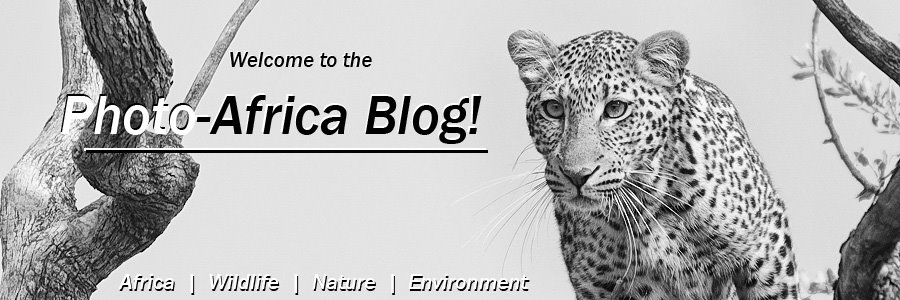Whenever you head out into the African bushveld you are surrounded by a great air of expectation. There is so much diversity out there and to, for a short time at least, truly be a part of Africa’s splendid natural heritage is something that never loses its appeal.
Yesterday Adele and I went for a drive on the Morukuru concession. As you will remember from a previous Blog post I am very keen to get a hold of the two Kgala male lions. These two cats are around 7 years old, in their prime and in absolutely perfect condition. You see, they have not had many run-ins with some of the other dominant lion coalitions in the area. Whether they are slight cowards, which I think is taking a lot of credit away from them, or whether they have just been lucky they are beautiful with almost no scars on their faces. Text book male lions.
So my mission for the next few days is to find the Kgala males for a bit of a photo shoot and yesterday we saw them for the first time.
From when we left the lodge we were looking for any sign that they have been around. As we got to the first watering hole we picked up fresh tracks of the Bulayo pride. This is a female, her sister and five of their ten month old youngsters. We know that they spend quite a bit if time with the Kgala males so we got on the tracks to see if they could lead us to the big prize.
It is lucky for us that lions do prefer walking on game paths and roads (softer on their feet) which makes it much easier to track them. You follow them on the road and at some point they always seem to divert onto a small game path. Out the vehicle, walk on the tracks to get a direction of where they were heading. Back to the vehicle and circle around to the other side of the block to see if they came out and crossed into the next block.
While tracking the Bulayo’s we had a few nice sightings as well..jpg) As we passed by the river we saw this little Brown Hooded Kingfisher sitting next to the road. The birding in this area, with the river and lots of watering holes, is spectacular. Summer time must be amazing as all the migrants return from the winter holiday but even now, while it is still very cold, the birding is great. Yesterday while visiting Madikwe Gardens (watch for a Blog on this spectacular oasis in Madikwe later this week) we saw a breeding pair of Gymnogenes (African Harrier Hawks). This was only the second time that I have seen these unique raptors in Madikwe and have never been able to get a proper image of these birds. I find time this week I would love to see if I can find where they are nesting.
As we passed by the river we saw this little Brown Hooded Kingfisher sitting next to the road. The birding in this area, with the river and lots of watering holes, is spectacular. Summer time must be amazing as all the migrants return from the winter holiday but even now, while it is still very cold, the birding is great. Yesterday while visiting Madikwe Gardens (watch for a Blog on this spectacular oasis in Madikwe later this week) we saw a breeding pair of Gymnogenes (African Harrier Hawks). This was only the second time that I have seen these unique raptors in Madikwe and have never been able to get a proper image of these birds. I find time this week I would love to see if I can find where they are nesting.
Back to the lions.
We followed the tracks into and out of many blocks and bumbled along the roads looking for the lions. As we moved towards Rondawel Dam the plains opened up next to us with a beautiful African scenes of Wildebeest, Zebra, Impala and Warthog all grazing around the plains. The sun was slowly edging towards the horizon and we were approaching that perfect ‘golden light’. My ideal would be to find the Kgala males early morning or late afternoon to photograph them in that awesome golden light.
We cut across the plains and while I was still focused on the road to see if the lion have not crossed anywhere, Adele spotted another one of our possible subjects for the week. Aardwolf.jpg)
This was the first image I have been able to get of this diminutive member of the Hyena family. Not an award winning photograph but this week looks promising. Earlier this week my tracker, Holiday, saw three of them on that same plain area which means there might be a den site somewhere. We watched the Aardwolf scratching around for a while and suddenly he disappeared into the ground. Gone. We drove in a straight line to where we last saw him and actually found the den site. We will take some time later this week to come and wait at the den site to see if we get lucky and see them up close and possibly perhaps even the pups.
The Aardwolf has also been called the werewolf which typifies the mystery that surrounds it. Even though it is part of the Hyaenidae family it fees almost exclusively on Snout Nosed Termites (Trinervitermes) and feeds at night. In winter time, when it gets too cold for the Snout Nosed Termites (and most early morning safari goers) to be active above ground, the Aardwolf switches to feeding on the Common Harvester Termites (Hodotermes). This means that the Aardwolf becomes diurnal during winter as a direct consequence of the change of diet.
After waiting for a short while to see if he reappears we decided to get back on the lion tracks.
It was not long until we picked them up again and as we followed them around the corner there he was. One of the Kgala males laying in the middle of the road looking away from us. Even from the back you could see he was big.
Now the sun was going to give us about another 15 minutes of workable photographic light and this male lion decided to play hard to get. He turned his head only once to look at us and that was it. As we got closer he got up, walked away from us and then cut into the bush directly to the sun. We followed off road for about 50 meters but he was able to put himself in the thickets with the sun right above him. There was about as much chance of getting any kind of decent image as Robert Mugabe has of actually getting a clue… swiftly moving along.
As we pulled back and reached the road again we saw the rest of the pride. They were all there..jpg)
We did not have much time to sit and watch Africa’s largest predator as they were in full hunting mode (as seen in the image above) We followed the Bulayo female as she stalked the Zebra on the plains. Long story short – we found ourselves trying to keep up as the females stalked the zebra and the males, which we could not see, started roaring in the background. Amazing experience, but only got a chance to get one image. The pace at which things was happening and the light that was now all but gone. The two females chased the zebras towards the hills and returned a few minutes later. Breathing heavily and still looking hungry. They walked back into the thickets where the males were still giving us the occasional roar. A stunning sighting and at least now we know for sure that they Kgala males are on the property. I will find them!!
We decided to head back as it was by now very cold and when adding the wind chill factor on the open game viewer it can get almost as unpleasant as listening to Robert Mugabe carrying on about a free and fair election… Moving swiftly along.
As always, we saw a few Mozambique Nightjars on the road.
These little birds sit on the roads in the evening as they use the canopy of the sky to see their insect prey better. This gives you a great chance to see them but unfortunately also leads to man of them being killed on roads outside of the reserve..jpg)
It is a true privilege to be out in the African Savannah and it is always exciting. There is so much magic out there and when you are watching nature’s story unfold in front of you everything else fades away and, at least for those couple of precious moments, it is not important. You become a part of nature and not just an observer.
To have the opportunity to photograph Africa’s Natural Heritage every day is a real challenge and something I am very passionate about.
Is it possible to freeze a perfect African moment?
Can you convey the sense of humility and awe you experience out in the bush through one single frame?
Can the beauty of Africa be shown in one photograph?
I would like to think so and that is my challenge.
As always I look forward to hearing from you!
Gerry
.jpg)
.JPG)







1 comment:
I hate to fill up your mail, but an Aardwolf! How can I not comment on that? Beautiful pictures, and I like all the ones in your previous posts, too. Thank you for sharing.
Post a Comment